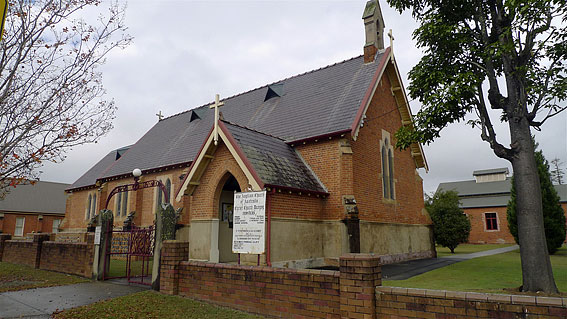
Christ Church Anglican Church, Dungog:
church exterior
[photograph by Trevor Bunning (May 2010)]

Christ Church Anglican Church, Dungog:
church exterior
[photograph by Trevor Bunning (May 2010)]
Historical and Technical Documentation by Kelvin Hastie
© OHTA, 2015 (last updated January 2016)
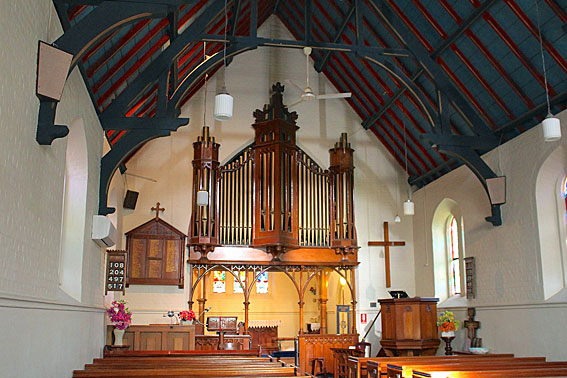
Christ Church Anglican Church, Dungog:
church interior
[photograph by Trevor Bunning (28 September 2015)]
In 1849, a meeting was held at Dungog Court House attended by William Tyrrell, the new 'Lord Bishop of Newcastle', to organise the building of a new church in Dungog. At this meeting the proposed £450 cost of 'a beautiful Church, drawn by Mr Blackett' was subscribed or otherwise guaranteed. Services had previously been held in the old court house and a weatherboard hall built in 1842. Building of the church commenced in 1849 and was completed in 1858, with the consecration by Bishop Tyrell occurring in 1861. The present rectory was built in 1912.1
In 1917 it was reported that the architect F.G. Castleden had received a contract to design a new and elaborate organ case, choir stalls, pulpit and altar for the church, the gift of Mr Theodore Hooke.2 Christ Church has the only example in New South Wales of an organ placed on a screen above a chancel arch.
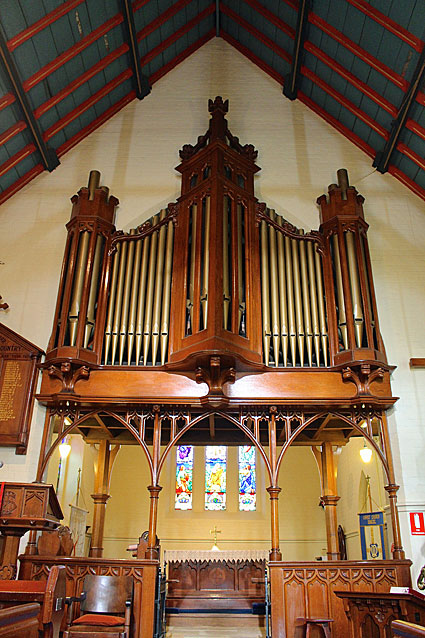
Christ Church Anglican Church, Dungog:
organ case
[photograph by Trevor Bunning (28 September 2015)]
The instrument was built in 1918 by Griffin & Leggo, of Sydney, being the firm's last contract before the partnership was dissolved. The original specification, recorded by Graeme Rushworth, indicates the presence of a Swell Cornopean 8, which was either prepared for, or removed at some stage.3 The console at that stage was located on the right hand wall of the chancel, beneath the organ.
In 1965 the organ was rebuilt by S.T. Noad & Son, who electrified the action and provided new console equipment. The Noad firm was notorious for nomenclature inaccuracies and misspellings when it came to the engraving of stopknobs and stopkeys. In the case of this organ, the original Great Stopped Diapason is now labelled 'Clarabel Flute', the firm also wrongly applying this name for the stopped flutes of several other instruments it built or rebuilt. The original Swell Salicional is now labelled 'Gamba 'and the Voix Celestes is now just 'Celestes'.4
The present specification of the organ is as follows:
| GREAT Open Diapason Clarabel Flute Dulciana Principal SWELL Violin Diapason Clarabella Gamba Celestes Lieblich Flute Orchestral Oboe PEDAL Bourdon Bass Flute |
8 8 8 4 8 8 8 8 4 8 16 8 |
COUPLERS
Great to Pedal
Swell to Pedal
Swell to Great
Swell Octave
Swell Sub Octave
Great Octave
Tremulant
Electro-pneumatic action
Compass 61/30
3 thumb pistons each to Great and Swell
Balanced swell pedal
Detached drawstop console
1. http://williamsvalleyhistory.org/religion/. Accessed 8 July 2015 by Kelvin Hastie. A complete history of the church is contained in William Lobbon, A substantial handsome church: the Anglican Parish of Dungog: 150 years of worship. Anglican Parish of Dungog, 2008.
2. Newcastle Morning Herald and Miners' Advocate, 26 October 1917, p.4. Information supplied by John Maidment.
3. Graeme D. Rushworth, Historic Organs of New South Wales (Sydney: Hale & Iremonger, 1998), p. 163.
4. Specification obtained from console photographs taken by Trevor Bunning, May 2010.
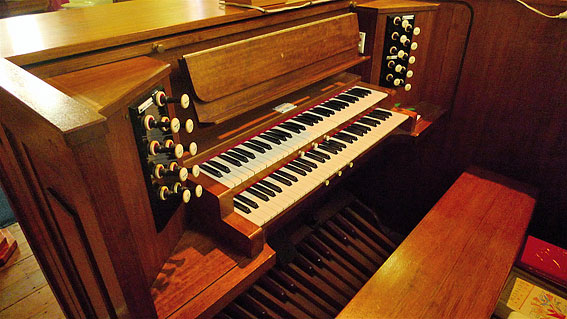
Christ Church Anglican Church, Dungog:
organ console
[photograph by Trevor Bunning (May 2010)]
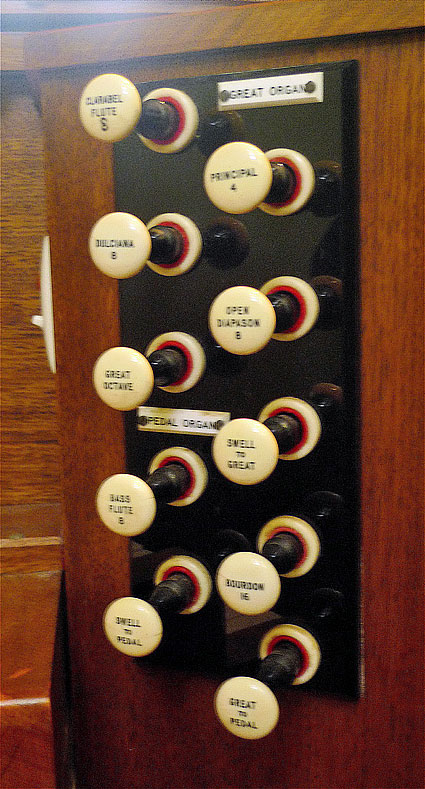
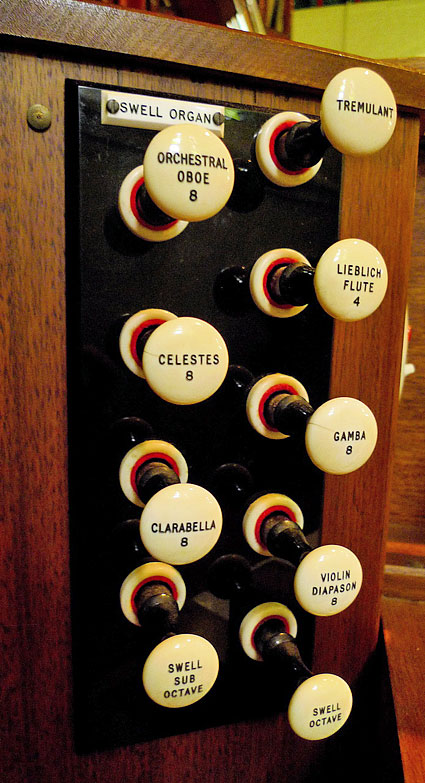
Christ Church Anglican Church, Dungog:
stop jambs
[photographs by Trevor Bunning (May 2010)]
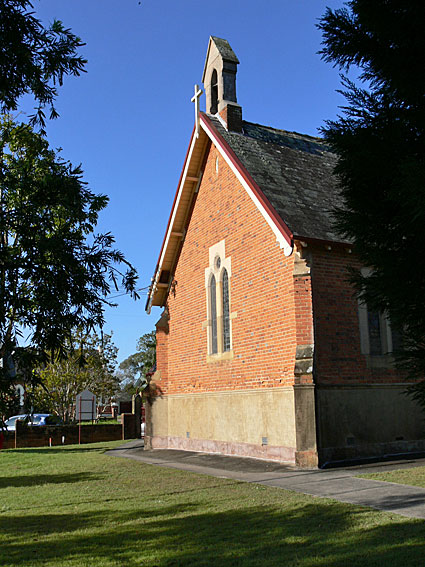
Christ Church Anglican Church, Dungog:
exterior from the south-west
[photograph by John Maidment (29 September 2015)]